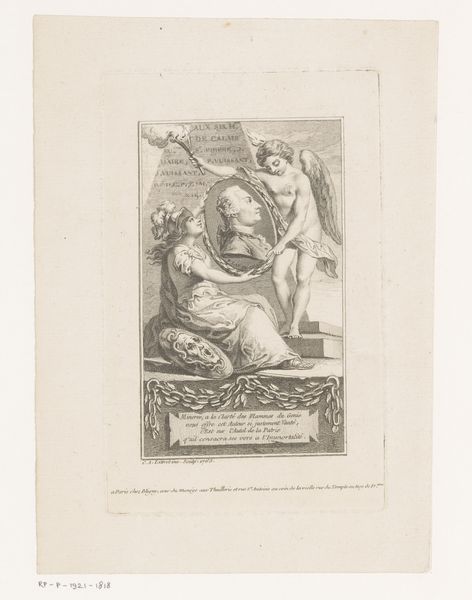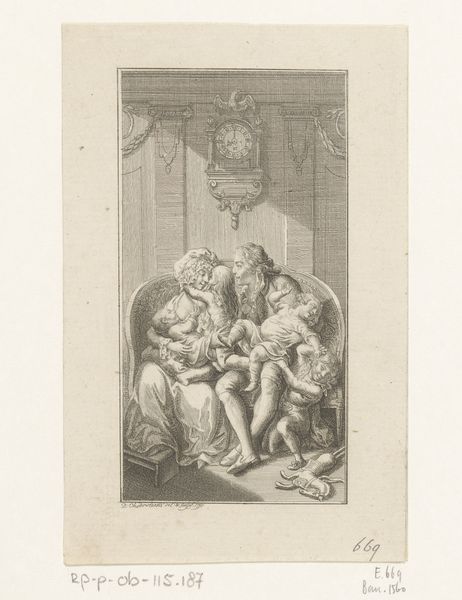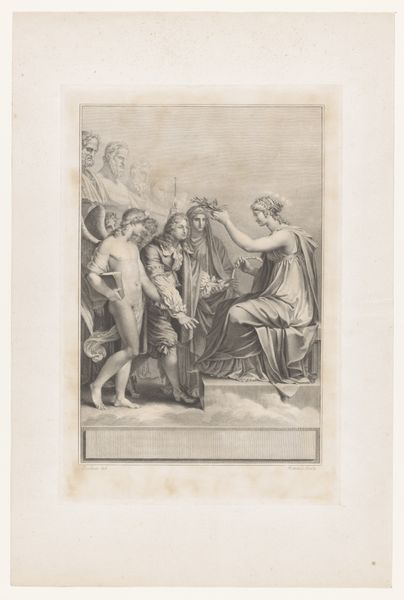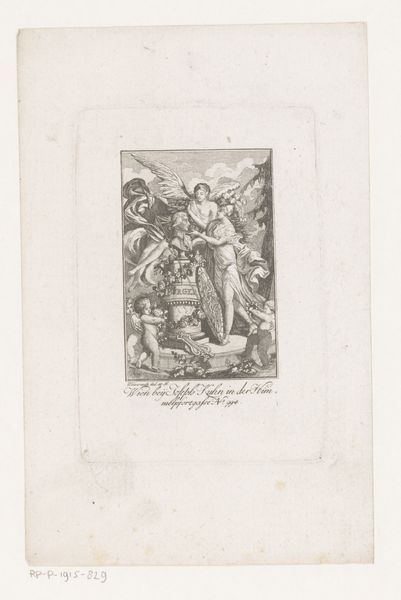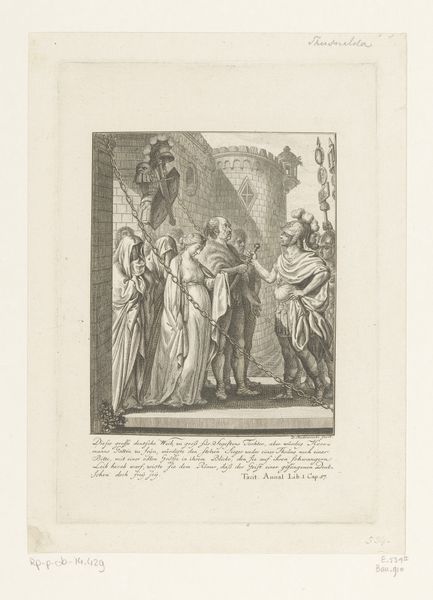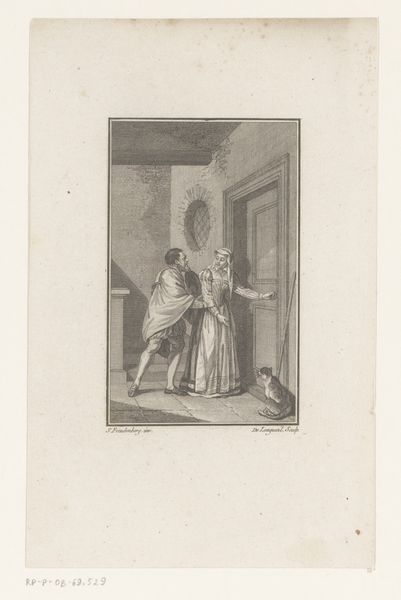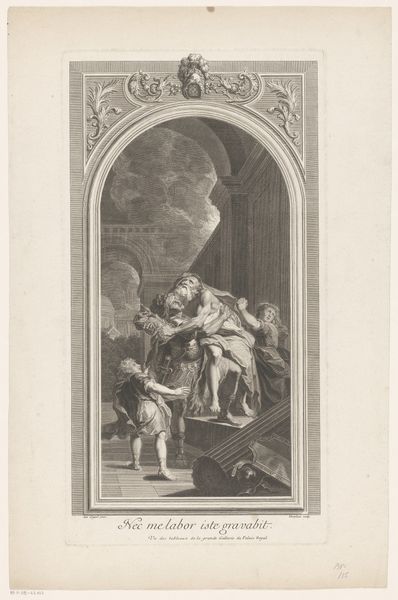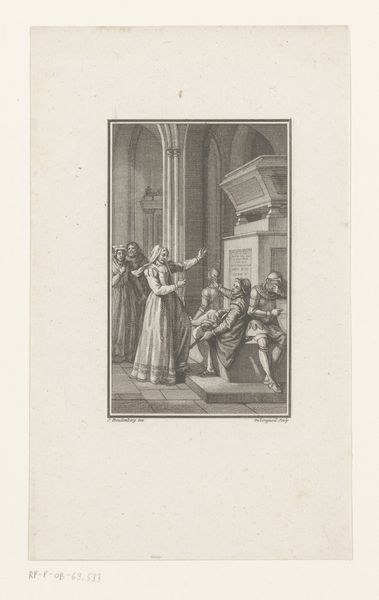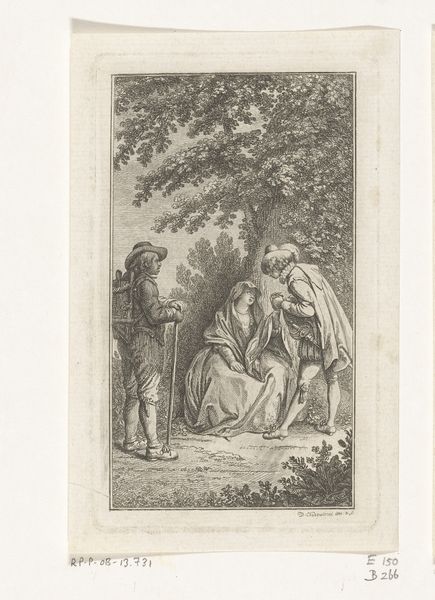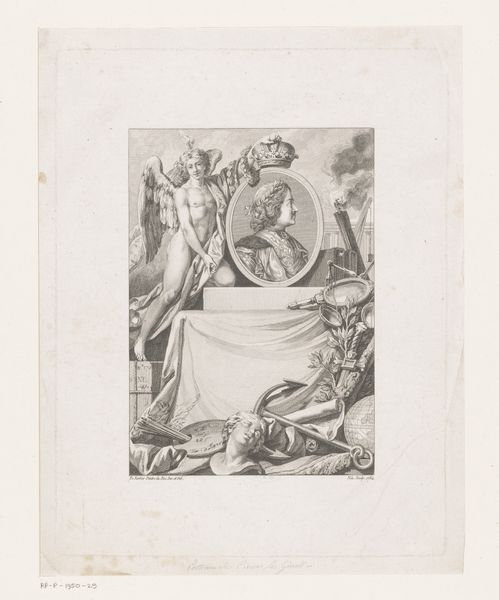
Dimensions: height 101 mm, width 74 mm
Copyright: Rijks Museum: Open Domain
Curator: Let's take a moment to consider this engraving from 1778. It's titled "Buste van Shakespeare," or "Bust of Shakespeare," and it's the work of Daniel Nikolaus Chodowiecki. Editor: You know, it's interesting. The first impression I get is a kind of serene artificiality, almost staged. The lighting is so even, the lines are precise... It feels more like a carefully crafted tableau than a portrait. Curator: That feeling isn't far off. The image borrows from a historical visual language, reminiscent of Baroque portraiture and academic art. The engraving uses line work to establish the forms, as we see in the soft drapery. Note the figures of a muse on one side and perhaps fame or mourning on the other. These figures elevate the image, suggesting an almost allegorical scene beyond a simple portrait. Editor: Right, allegorical is spot on! The pedestal inscribed with "Shakespear" and these almost theatrical figures... it's celebrating Shakespeare as a cultural icon, elevating him into the realm of myth. Who needs subtle character studies when you have Drama, writ large? Curator: Exactly. The wreath being placed upon the bust symbolizes honor and immortal glory, a theme that's echoed in history paintings. Consider that the print itself, as a readily reproducible object, allowed for the wider dissemination of Shakespeare's image and reputation. Editor: It's such a clean, ordered image, isn't it? Yet, at the same time, there's something emotionally removed about it. Is that because it is not painted or sculpted? Because the bust is itself a copy of something real and so is the engraving? Does removing it a few steps from the original dampen the feeling? Curator: Perhaps. Or that distance might serve to distill and codify Shakespeare's image into a recognizable brand, almost. This isn't a flesh-and-blood human, but rather the embodiment of genius and artistry for future generations. Editor: Hmm, okay. Well, despite the Baroque style it almost feels... well, advertising. So, next time I reach for a bit of Bard, I will imagine this advert rather than any human resemblance. Curator: Ultimately, this piece underscores the power of imagery in shaping and preserving cultural memory. Editor: Absolutely. I'm taking away that how we visually memorialize someone—in any artistic format—speaks volumes about their legacy, more so even than some old bust in a library.
Comments
No comments
Be the first to comment and join the conversation on the ultimate creative platform.
